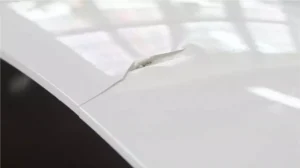
How to estimate the injection molding product has been finished by Re-grind resin?
How to estimate the injection molding product has been finished by Re-grind resin?
Re-grind resin is a public secret in the plastic injection industry. Some injection molding manufacturers claim that in the current environment of industrial ecology and price competition, if they do not add some secondary materials, they cannot make money and recycle resources.
However, from a quality point of view, adding secondary materials to plastic means a risk of strength reduction and brittle structural crack.
The best way to control the use of plastic secondary materials is two-pronged; the first is expressly stipulated in the drawings, not allowed to add secondary materials. The second is to audit the production status of the plastic injection factory from time to time. If we can further control the MFI value of each batch of plastic materials when they are fed and then check the MFI value of the finished products, we should be able to achieve the quality assurance of more than 99% of the plastic products.

If you don’t know what MFI is, please refer to the article “The Melt Index of Injection Molding Materials.”
If you also want to know How to deal with the brittle crack crisis of injection molding products. please refer to the article “Brittle crack crisis management of plastic injection products .”
If you are a plastic factory auditor, do you know how to check whether the plastic factory is secretly using recycled materials?
Here are some tips:
- 1. To injection molding manufacturer random inspection, directly from the [drying cylinder] or [hopper] directly grab a plastic resin (resin) out of the general normal plastic resin for a long cylinder cut off, in addition to the cutting surface, its appearance should be smooth round or elliptical strip; Secondary material is generally broken head or defective products, irregular shape, both are easy to identify. But you’re unlikely to be at a plastic factory 24 hours a day.
- 2. In addition, there is another problem to be noted, dyeing plants and modified granule plants will also add secondary materials, which are difficult to detect with the naked eye. This is usually checked with the MFI value as the first step, and the second step is to test whether the impact strength meets the specification.
3. It can also calculate whether the purchase of plastic granules in the plastic factory is inconsistent with the output of finished products and trace the whereabouts of the material head. (Plastic granule quantity = plastic granule inventory + finished product output + material head)
4. General black finished products are easier to add secondary material because black is worth ten thousand colors, so special spot check black material.
5. If the secondary material added is the head of the original material, theoretically, there is no concern about different colors. However, there is still a risk of degradation to avoid fish-eye beads or try not to allow manufacturers to use secondary materials, even if it is the same plastic pellet head.
6. Generally add the finished product of two materials, its structure will become more brittle, can do the destructive test, forced to break the product, there will be “pa” sound and section white more, maybe to add two materials.
7. Take the finished product to test the MFI.
Categories
Share On
Recent Post

Injection Molding Defects: Brittle crack
Here is a painful lesson learned by one of our

Everything You Need To Know About Laser Welding
Laser welding is a high-precision method for joining materials that

